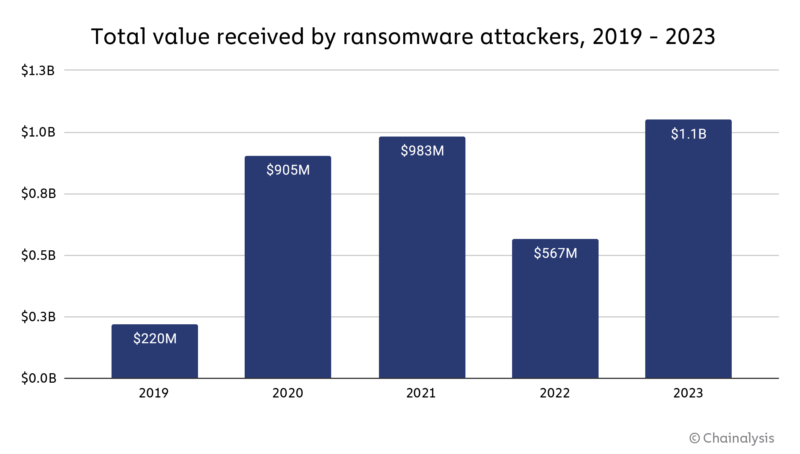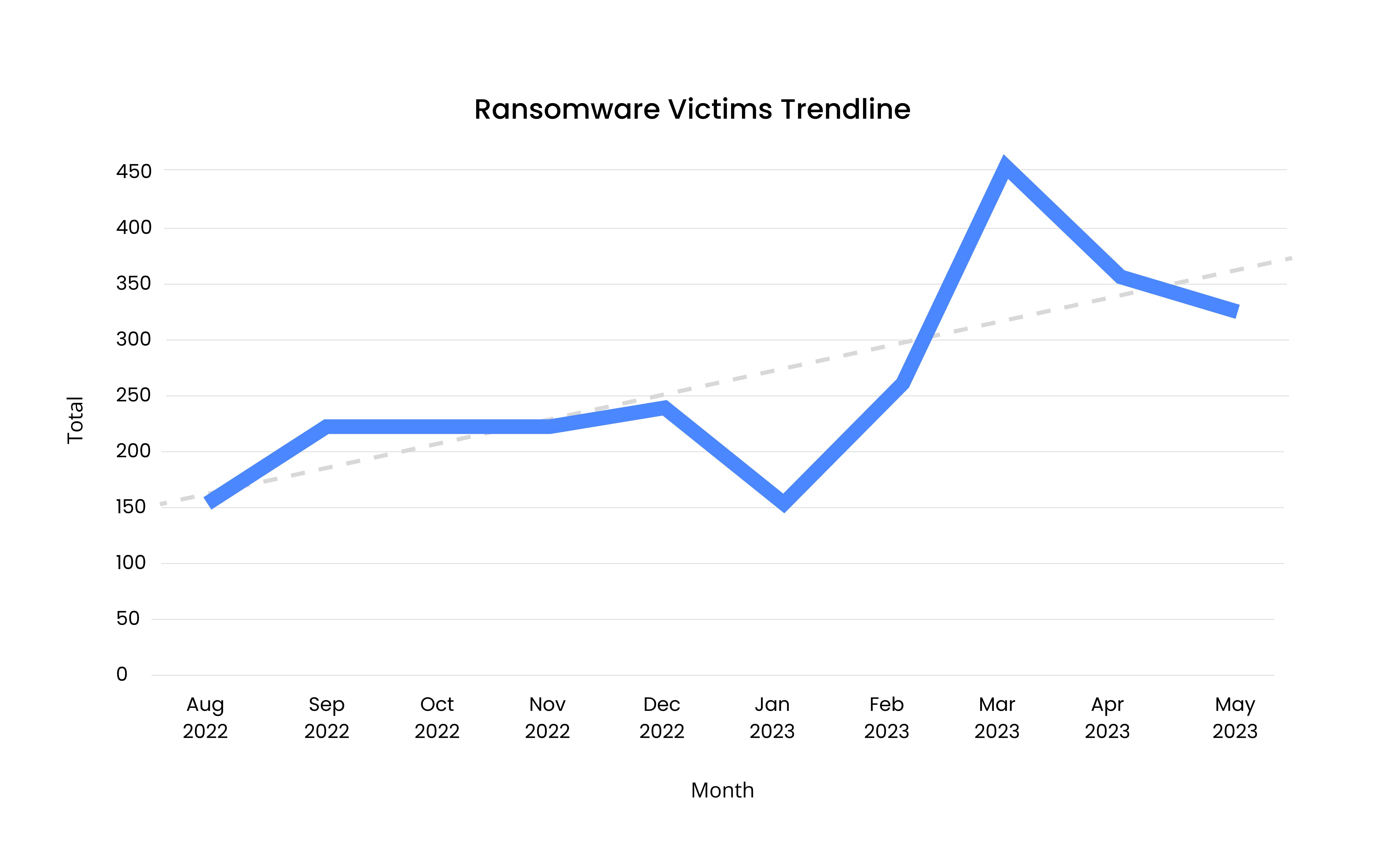Are you worried about the rising threat of ransomware attacks? You’re not alone.
This year has seen a surge in these malicious cybercrimes, and it’s essential for you to stay informed. Imagine waking up one morning to find that your computer is locked and your valuable data is being held hostage. It’s a terrifying scenario, but understanding the latest trends can empower you to protect yourself and your business.
Dive into this article to uncover the tactics hackers are using, the industries most at risk, and the steps you can take to safeguard your digital world. Your security is at stake, and knowledge is your first line of defense. Are you ready to explore the critical ransomware trends of this year? Let’s delve into the details that matter most to you.

Rising Sophistication
The complexityof ransomware is growing. Attackers use advanced toolsnow. They hide their tracks more effectively. Victims often find it hard to detect attacks early.
Many attackers use encryptionto lock files. They demand money to unlock them. This makes recovery very difficult. Companies face huge lossesfrom these attacks.
Security experts work hard to stop them. They use new methodsto protect data. Keeping systems updated helps a lot. It is important for everyone to stay vigilant.

Targeting Critical Infrastructure
Ransomware attacks hit critical infrastructure hard this year. Bad people focus on places like hospitals and power plants. These places are vital. They need to work all the time. Hackers know this. They demand money to stop the attack.
These attacks can cause big problems. People may not get the help they need. Power could go out. Water might not be safe. Hackers want quick money. They know these places cannot wait. Paying seems like the only way out.
Protecting critical systems is very important. Security teams work hard. They try to stop attacks before they start. Training helps too. Workers learn what to do. They keep systems safe.
Double Extortion Tactics
Ransomware attacks are more dangerous now. Criminals use double extortion tactics. First, they encrypt files on a computer. Then, they threaten to release personal data. Victims face a hard choice. Pay the ransom or risk data exposure. This makes it scary for companies. They fear losing trust with customers. Attackers often ask for large sums of money. Many companies are forced to pay. Cybersecurity experts advise on how to protect data. Keeping files secure is important. Regular backups help in recovery. Training staff to recognize threats is key. Being alert can prevent attacks.
Emerging Ransomware Variants
Ransomware is always changing. New strains appear every day. These new types are hard to stop. They can sneak into computers. Many are more dangerous than older ones. They can lock files and demand money. Hackers create these new strains to trick people. They want to steal data and get rich. Protecting computers is now harder. Everyone must be careful online. Updating software can help. So can using strong passwords. New ransomware is a big threat. It affects people and businesses everywhere.
Modern ransomware is very smart. It uses special tricks to hide. Many can change shapes to avoid detection. Some can spread fast across networks. They use emails or fake sites to attack. Once inside, they lock files. They also often steal important data. Ransomware can also stop important services. This makes it hard for people to work. Strong cybersecurity tools are needed. People need to learn about these dangers. Knowing how ransomware works can help stop it.
Impact On Small Businesses
Small businesses are targets for ransomware attacks. They often have fewer resources. Many do not have strong security. Attackers exploit this weakness. They demand money to unlock files. This can be very costly.
Some businesses cannot afford the ransom. This may lead to closure. Others face loss of customer trust. Data breaches expose sensitive information. Rebuilding trust can take time. Small businesses must be cautious.
Backing up data is crucial. Use secure methods to store data. Train employees to spot phishing scams. This reduces the risk of attacks. Investing in security is vital for survival.
Ransomware-as-a-service (raas)
Ransomware-as-a-Service, or RaaS, is a big problem. It works like a business. Hackers rent tools to attack computers. They don’t need skills.
This model makes it easy to spread. Many bad people can use it. They attack schools, hospitals, and companies. Victims lose data and money.
RaaS is cheap for hackers. They pay a small fee to use it. This makes it popular. Hackers can attack many places fast.
People need to be careful online. RaaS is growing. It is a danger to everyone. Protect your computer with strong passwords and updates.
Geopolitical Motivations
Ransomware attacks grow due to geopolitical tensions. Many hackers target countries they don’t like. This makes their attacks more frequent. Some hackers want to send a message. They choose targets based on political events. When countries fight, attacks increase. Hackers also want to cause fearin people. They use ransomware to disrupt services. This can affect hospitals and schools. Important datacan be lost. Businesses face big problems. They lose money and trust. People suffer because of this. Governments try to stop these attacks. They need strong security systems. Everyone should be careful online.

Cryptocurrency And Ransomware
Ransomware attacks are on the rise. Many hackers demand payment in cryptocurrency. Why? Because it is hard to trace. This makes it easier for criminals. They can hide their tracks well. Bitcoin is the most popular choice. Hackers love it because it is secure and anonymous. Paying with cryptocurrency is fast. It is also hard to block. Many victims pay quickly to get their data back. This encourages more attacks.
Some companies are trying to fight back. They invest in strong cybersecurity. They also teach workers to be careful. Being alert can stop many attacks. But the threat remains. Cryptocurrency continues to play a big role. It shapes how ransomware evolves. Staying informed is key.
Evolving Defense Strategies
Companies are setting up stronger security walls. They use advanced software to keep hackers out. Regular training helps workers spot suspicious emails. This reduces the risk of clicking on dangerous links. Businesses also keep their systems updated. Updates fix weak spots that hackers might use. With backups, data stays safe even if attacks happen. Backups are stored in secure locations, away from main systems. This way, data can be restored quickly.
Every company needs a response plan. These plans help them act fast in attacks. A team knows what to do first. They check how bad the attack is. Communication is key. Workers know who to call for help. This includes experts and police. Plans also include how to talk to the public. This keeps the company’s name safe. Regular practice drills make sure everyone is ready.
Future Predictions
The rise in ransomware attackscontinues to worry experts. Many believe attacks will grow. More businessesmight become targets. Hackers are getting smarter. They find new ways to trick users. This year, attacks might double. Companies need stronger security.
Many attacks could target remote workers. Home networks are often weak. Hackers know this. They look for easy targets. Protecting home devices is now crucial. Always update software. Use strong passwords.
Some attacks might demand higher ransoms. Hackers know businesses will pay. Keeping data safe is vital. Backup data regularly. This reduces ransom threats. Companies must stay alert. Ransomware changes quickly.
Frequently Asked Questions
What Is Ransomware?
Ransomware is malicious software that encrypts data, demanding payment for access. It targets individuals and organizations, causing financial and reputational harm. Prevention includes regular backups, security software, and employee training. Staying informed on attack trends can help defend against evolving threats.
How Do Ransomware Attacks Start?
Ransomware attacks often begin with phishing emails, malicious links, or infected attachments. Cybercriminals exploit vulnerabilities in systems or software. Once inside, ransomware encrypts files, demanding a ransom for decryption. Awareness and cautious online behavior can reduce the risk of falling victim.
Can You Prevent Ransomware Attacks?
Yes, ransomware attacks can be prevented with robust security measures. Regularly update software and systems, use firewalls, and perform frequent data backups. Employee education on recognizing phishing attempts is crucial. Implementing a multi-layered security approach reduces vulnerability to attacks.
What Are The Latest Ransomware Trends?
Ransomware trends show increased targeting of critical infrastructure and remote work environments. Cybercriminals leverage advanced encryption techniques and demand higher ransoms. Double extortion, threatening data leaks, is on the rise. Monitoring these trends helps organizations bolster defenses against evolving threats.
Conclusion
Ransomware attacks are increasing and evolving rapidly this year. Businesses must stay alert and prepared. Regular software updates can help protect against threats. Employee training is crucial for recognizing suspicious activities. Investing in security solutions is wise. Backing up data regularly minimizes potential damage.
Understanding these trends helps in making informed decisions. Cybersecurity should be a top priority for everyone. Stay informed, stay safe. Keep your digital environment secure from ransomware attacks. Awareness and action are key. Always prioritize data protection and resilience.
Read More:
- Global Supply‑Chain Disruption Alerts: Navigating the Chaos
- Smart Grid Pilot Program Launches: Revolutionizing Energy Use
- Next‑Gen Renewable Energy Storage Updates: Breaking Innovations
- Us Midterm Election Impact Analysis: Key Takeaways & Trends
- New Data‑Privacy Law Enforcement Cases: Unveiling Insights
- Mental‑Health Teletherapy Adoption Rates: A Rising Trend
- Ethereum Shanghai Upgrade Analysis: Unveiling Key Insights
- German Election Polling Analysis: Insights and Key Trends

